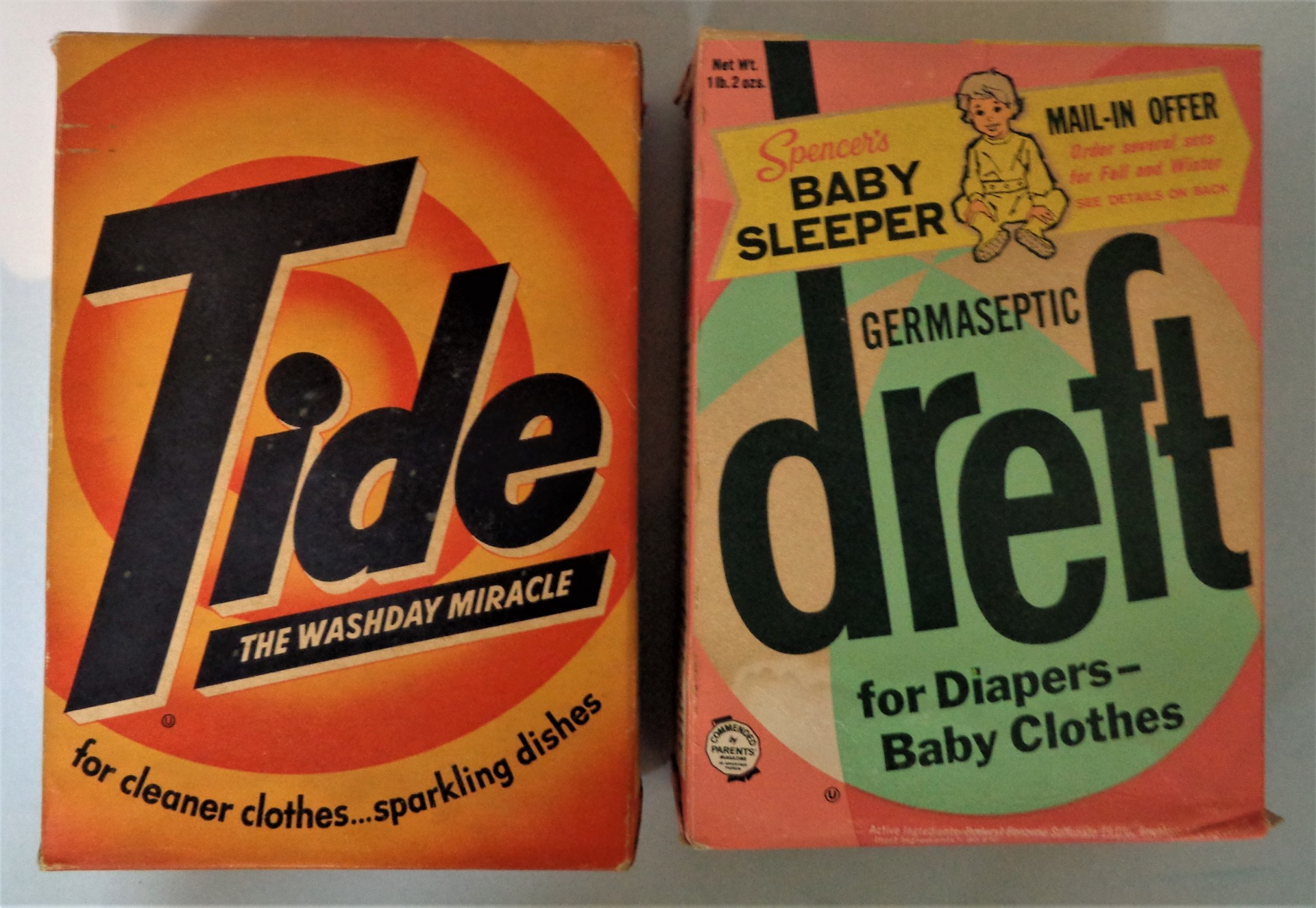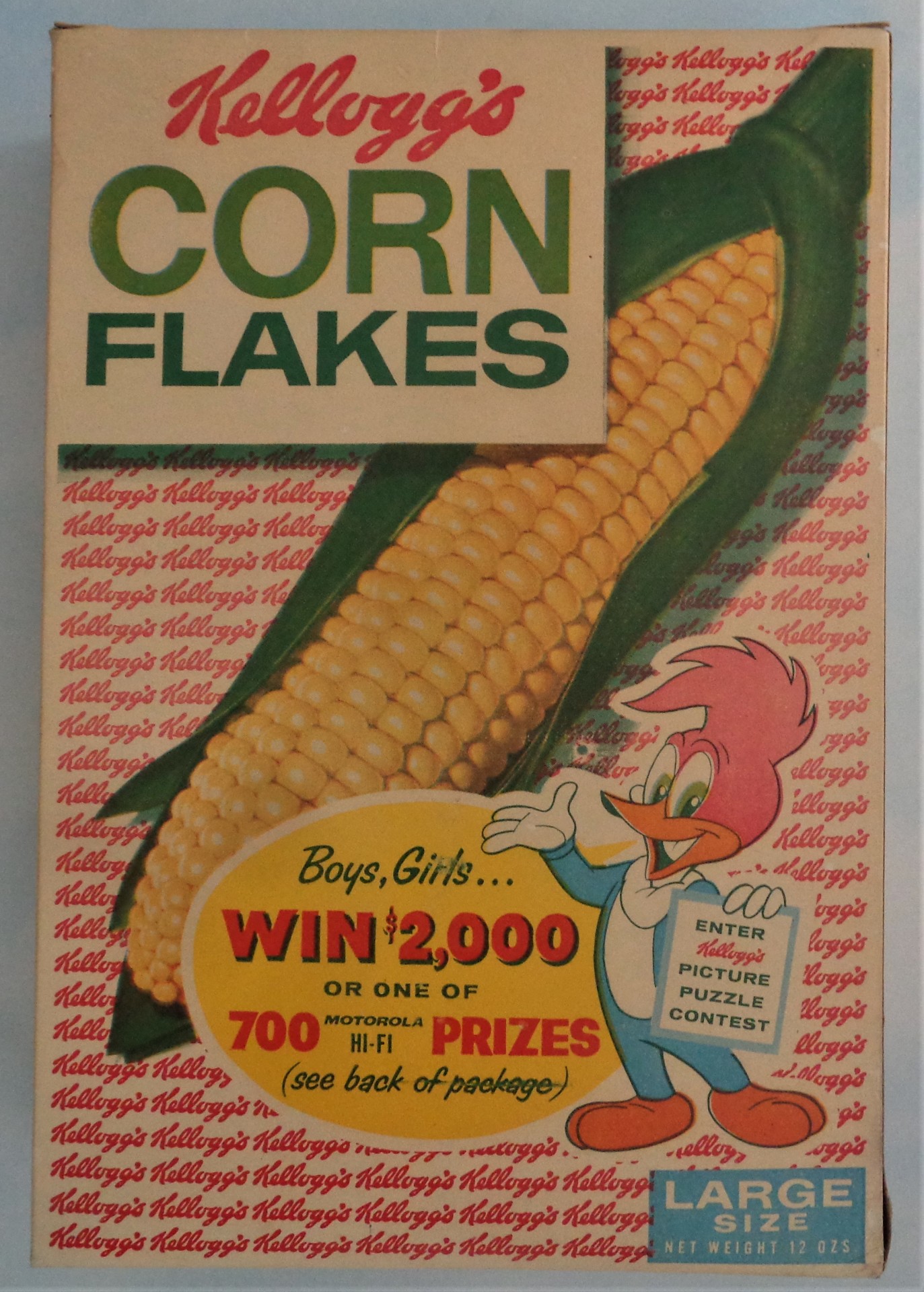
New!

Space Age Design
Midcentury Futuristic Atomic Googie Jet Age


Supermarket Containers
I'm all lost in the supermarket
I can no longer shop happily
I came in here for that special offer
A guaranteed personality
I can no longer shop happily
I came in here for that special offer
A guaranteed personality
From "Lost in the Supermarket" by the Clash

The Clash song referred to above, according to Wikipedia, describes someone struggling to deal with an increasingly commercialized world and rampant consumerism. That song was released in 1979. In the 1950s and early 1960s, the Supermarket was an exciting new place popping up all over suburbia.
Until the 1930s, shoppers went to several stores to get their food and household products. The food stores were small and usually family owned. Much of the food was not in containers with advertising on it. It was behind the counter and retrieved and measured by a store clerk. This was a slow and labor intensive process.
The first self service grocery store was a Piggly Wiggly opened in 1916. A&P opened up smaller scale self service stores across the country in the 1920s. Probably the first Supermarket was a 6,000 square foot King Kullen opened in 1930 in Queens, New York City. Unlike prior stores, King Kullen offered perishables and dry goods. It also had a parking lot, food departments and low low prices. These prices drove the old corner grocery stores out of business.
After the war, transportation became easier and people started moving to the suburbs. Huge Supermarkets of the size seen today started to be built. Suddenly, food and household products manufacturers had to compete with thousands of other products in the same store for attention. Space Age design was perfectly taylored to grab attention. Attention grabbing graphics with words like "New", "Improved" "Free" and "More" were added. Bright colors and bold designs helped their products stand out. These containers had personality. Not all or even most products had these bold graphics but many did.
Of course by the late 1970s, many were lamenting the overload of consumerism in commercials and packaging. Bold packaging has not gone away, but it never was more attention grabbing as in the midcentury era.
Tide was big in the 1950s too.



Store display candy container. Were all kids this happy?
TV diners were invented in the 1950s. The tray itself is a very Space Age design



9 volts for the transister radio D batteries C batteries






Supermarkets also killed off the milk man. Wax paper milk cartons became common in the 1950s.





Franco American a major brand for Campbell's since 1915 but phased down in recent years.




The peanut butter and jelly sandwich was a kids favorite of the era.


Store display candy box
Space Cadet Syrup Containers



Cereal boxes are a fun category all to themselves. Kids that grew up in the 1950s and 1960s and even much later remember the sugared cereals they ate. These are heavily sought after today with prices often in the hundreds. Attention grabbing packaging was a must when appealing to short attention span kids. Trix Box from 1964.


A god given right of every man living in suburbia was to have an outdoor grill. If he didn't have a grill, yes there was even a portable barbecue pit.
Below are two original videos of supermarkets in the 1950s. The first is 5 minutes and without sound. It shows the food and shoppers. The second is 9 minutes and describes all the work behind the scenes to run a supermarket. Note the majority of products shown are not futuristic in design. This helped those using futuristic design to stand out.



Some of the most interesting household containers were found in the garage.


This product was like Tupperware






An early spray can from the mid-1960s. Breck was a top seller in the 1960s.
Apparently cleaning your furniture was glamorous in the 1950s.
Mother Parker Coffee 1 pound can, from Toronto.

